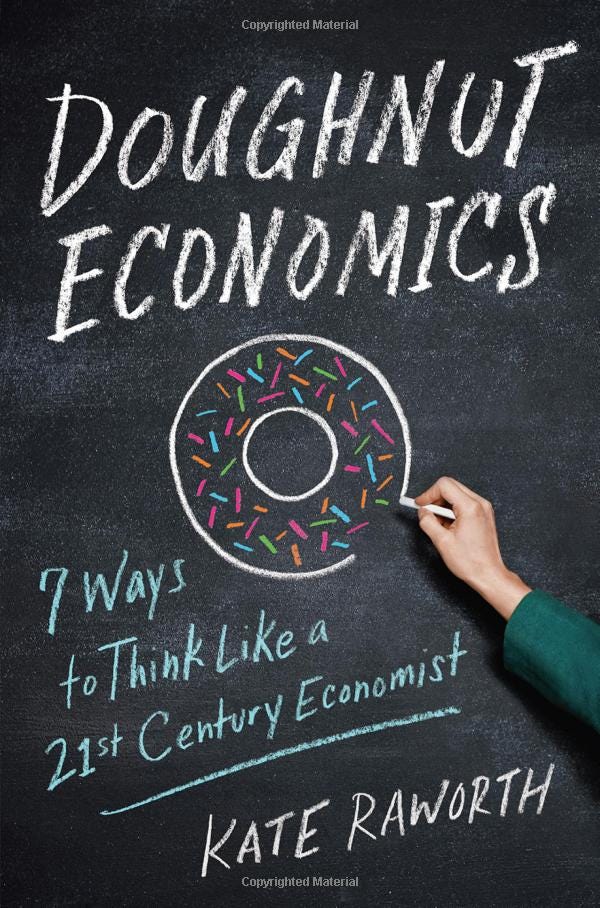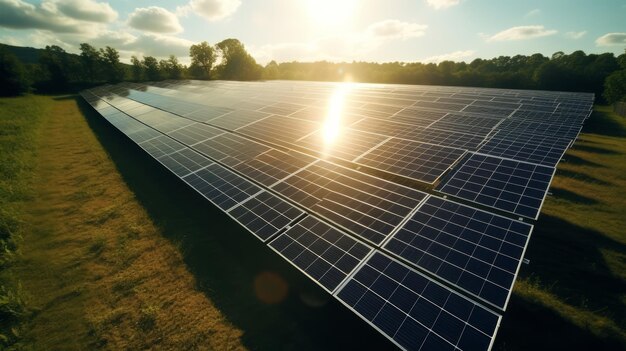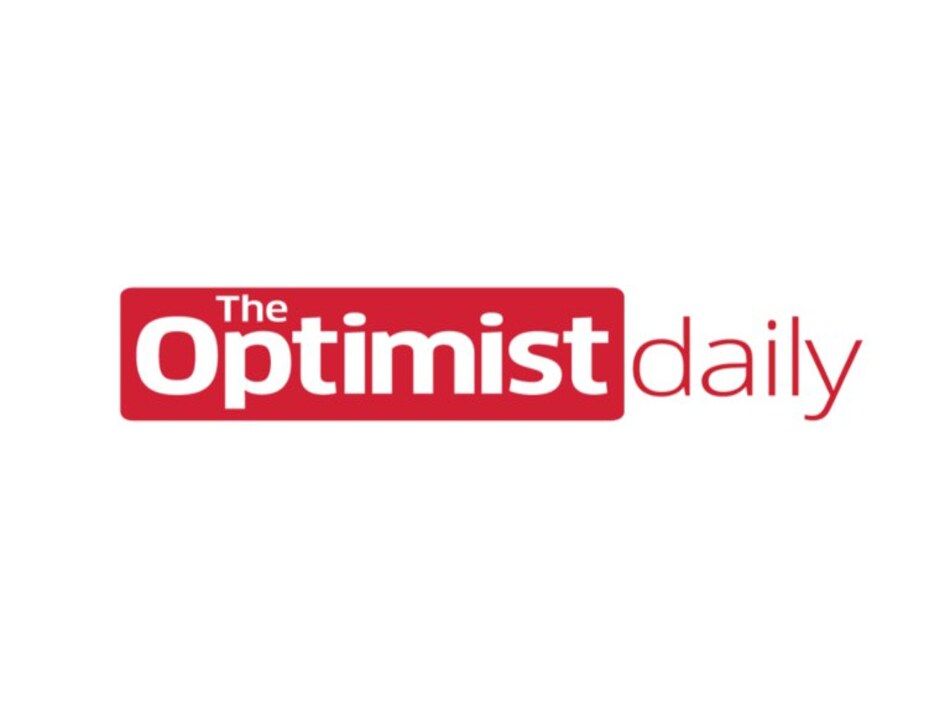
Doughnut Economics: A New Framework for Prosperity – Thriving Within Planetary Boundaries
Are you tired of economic models that prioritize endless growth at the expense of our planet and people? Do you believe there’s a better way to measure success than just GDP? If so, then get ready to explore Doughnut Economics, a revolutionary framework that offers a fresh, holistic perspective on prosperity for the 21st century.
Developed by visionary economist Kate Raworth, Doughnut Economics isn’t just a theory; it’s a practical, visual, and compelling guide for creating a world where humanity can thrive within the ecological means of our planet. It’s about finding the sweet spot – much like the delicious center of a doughnut!
What is Doughnut Economics? The Sweet Spot for Humanity
Imagine a doughnut. It has an outer ring and an inner ring. In Kate Raworth’s model, this simple, relatable image represents the ideal space for human well-being.
Doughnut Economics is a visual framework for sustainable development that combines the concept of planetary boundaries with social foundations. It proposes that the goal of economic activity should be to bring humanity into the "safe and just space" between these two sets of boundaries.
- The Inner Ring (Social Foundation): This represents the minimum standard of living required for human dignity and well-being. If we fall short here, it means people are facing deprivation.
- The Outer Ring (Ecological Ceiling): This represents the planetary boundaries that humanity must not overstep to avoid severe environmental damage and instability. If we go beyond this, we risk irreversible harm to Earth’s life-support systems.
- The Doughnut Itself (The Safe and Just Space): The area between the social foundation and the ecological ceiling. This is where humanity can truly thrive, meeting everyone’s needs within the planet’s capacity.
The ultimate aim of Doughnut Economics is to ensure that no one falls into the hole in the middle (deprivation) and that we don’t overshoot the outer crust (ecological degradation).
The Inner Ring: The Social Foundation – Meeting Everyone’s Needs
The inner boundary of the Doughnut outlines the social foundation – the essential resources and conditions every person needs to lead a dignified life. Falling short in any of these areas means people are living in a state of deprivation, experiencing poverty, inequality, and injustice.
Kate Raworth identifies 12 key social dimensions, inspired by the UN’s Sustainable Development Goals (SDGs), that must be met for human well-being:
- Food: Ensuring access to sufficient, safe, and nutritious food for all.
- Health: Providing universal healthcare and promoting well-being.
- Education: Offering quality education opportunities for everyone.
- Income & Work: Ensuring decent work and sufficient income for all.
- Water & Sanitation: Universal access to clean water and sanitation facilities.
- Energy: Access to affordable, reliable, and clean energy.
- Networks: Fostering social equity and community connection.
- Gender Equality: Achieving equality for all genders.
- Housing: Ensuring safe, affordable, and adequate housing for all.
- Political Voice: Empowering people to participate in decisions that affect their lives.
- Social Equity: Reducing inequalities and ensuring fair opportunities for all.
- Peace & Justice: Building peaceful, just, and inclusive societies.
The goal is to ensure that no one is left behind, creating a society where everyone has the opportunity to flourish.
The Outer Ring: The Ecological Ceiling – Respecting Planetary Boundaries
The outer boundary of the Doughnut represents the ecological ceiling – the Earth’s natural limits that we must not exceed. These are the nine planetary boundaries identified by Earth system scientists, beyond which there is a risk of irreversible environmental change and collapse.
Overshooting these boundaries means putting immense stress on our planet’s life-support systems, threatening the very conditions that allow humanity to thrive. The nine planetary boundaries include:
- Climate Change: Limiting greenhouse gas emissions to prevent dangerous global warming.
- Ocean Acidification: Protecting marine ecosystems from increasing acidity.
- Chemical Pollution: Reducing the release of hazardous substances into the environment.
- Nitrogen & Phosphorus Loading: Managing the flow of these nutrients to prevent pollution and ecosystem disruption.
- Freshwater Use: Ensuring sustainable use and availability of freshwater resources.
- Land Conversion: Protecting forests, wetlands, and other vital ecosystems from unsustainable conversion.
- Biodiversity Loss: Halting the extinction of species and preserving ecosystem integrity.
- Atmospheric Aerosol Loading: Reducing air pollution that impacts climate and health.
- Ozone Depletion: Protecting the stratospheric ozone layer.
Staying within these boundaries is crucial for maintaining a stable and resilient Earth system, which in turn supports all life, including human societies.
Beyond GDP: Redefining Prosperity in the 21st Century
For decades, Gross Domestic Product (GDP) has been the primary measure of a nation’s success. However, Doughnut Economics highlights the fundamental flaws of this approach:
- GDP measures activity, not well-being: It counts things like pollution cleanup and healthcare for illness as positive contributions, even if they result from negative events.
- It ignores social and environmental costs: GDP doesn’t account for inequality, resource depletion, or climate change.
- It promotes endless growth: In a finite world, endless growth is an impossibility and leads to overshooting planetary boundaries.
Doughnut Economics shifts the focus from relentless economic growth to thriving within boundaries. Prosperity is no longer defined by how much we produce or consume, but by how well we meet human needs while respecting the planet’s capacity to regenerate. It’s about creating economies that are:
- Regenerative by Design: Mimicking nature’s cyclical processes, where waste from one process becomes food for another, moving away from linear "take-make-dispose" systems.
- Distributive by Design: Ensuring that wealth, opportunities, and resources are shared more equitably, rather than concentrating in the hands of a few.
This new definition of prosperity encourages us to ask: How can we design economies that allow people and the planet to flourish together, rather than at each other’s expense?
How Does Doughnut Economics Work in Practice? The Four Lenses
Applying Doughnut Economics requires a fundamental shift in how we think about and design our economies. Raworth proposes using four interconnected lenses to redesign our systems:
-
Purpose:
- Old View: The purpose of the economy is endless GDP growth.
- New View: The purpose is to meet the needs of all within the means of the planet – to bring humanity into the Doughnut. This means moving from a focus on growth to a focus on thriving.
-
Networks:
- Old View: Linear supply chains (take-make-dispose).
- New View: Circular and regenerative networks. This involves designing products for durability, reuse, repair, and recycling, minimizing waste and regenerating natural capital. Think of the circular economy principles.
-
Governance:
- Old View: Centralized, top-down, state- or market-dominated governance.
- New View: Polycentric governance, involving diverse stakeholders from local communities, businesses, civil society, and government working together. This promotes collaborative decision-making and shared responsibility.
-
Ownership:
- Old View: Shareholder-first, profit-maximizing ownership structures.
- New View: Diverse ownership models that are more distributive by design. This includes employee ownership, co-operatives, community land trusts, and purpose-driven businesses that prioritize social and environmental well-being alongside profit.
By applying these four lenses, we can transform industries, cities, and even national policies to move towards a Doughnut-shaped future.
Real-World Applications: Doughnut Economics in Action
While Doughnut Economics is a relatively new framework, it’s gaining significant traction globally, inspiring cities, communities, and organizations to rethink their development strategies.
- Amsterdam’s Doughnut City: The city of Amsterdam was the first to formally adopt the Doughnut Economics framework as a guiding principle for its post-COVID-19 recovery and future urban development. They are using it to assess housing, food, mobility, and waste management, aiming to become a fully circular city by 2050 while ensuring social equity.
- Other Cities and Regions: Cities like Copenhagen, Brussels, and regions like Cornwall (UK) are exploring and adapting the Doughnut framework to their local contexts, developing "city portraits" to identify their unique social shortfalls and ecological overshoots.
- Business Transformation: Businesses are beginning to explore how they can operate within the Doughnut, adopting regenerative practices, ethical supply chains, and more distributive ownership models. Examples include companies focusing on cradle-to-cradle design, zero-waste initiatives, and fair-trade practices.
- Educational Initiatives: Universities and schools are integrating Doughnut Economics into their curricula, empowering the next generation of economists, policymakers, and innovators with a holistic understanding of sustainable development.
These examples demonstrate that Doughnut Economics is not just an abstract idea, but a powerful tool for practical, localized action towards a more sustainable and equitable future.
Challenges and the Path Forward
Implementing Doughnut Economics is not without its challenges. It requires:
- Systemic Change: Moving away from deeply entrenched economic systems and mindsets.
- Measurement and Data: Developing new metrics and data collection methods to track progress towards the Doughnut.
- Political Will: Gaining the commitment of governments and policymakers to adopt and implement these principles.
- Global Cooperation: Addressing global challenges like climate change and inequality requires international collaboration.
However, the urgency of our planetary and social crises makes a compelling case for embracing this new framework. Doughnut Economics offers a clear, actionable vision for a future where economic success is measured by the health of our planet and the well-being of all people, not just by financial growth.
Why Doughnut Economics Matters for You and the Future
Doughnut Economics provides a beacon of hope and a practical roadmap for addressing the most pressing challenges of our time. It reminds us that:
- Our well-being is intrinsically linked to the health of the planet.
- True prosperity means everyone can thrive, not just a few.
- We have the power to design economies that are regenerative and distributive.
By understanding and advocating for Doughnut Economics, you become part of a growing movement dedicated to building a future that is not just sustainable, but truly abundant for all life on Earth. It’s time to move beyond the limitations of outdated economic thinking and embrace a framework that truly serves humanity and the planet.
Frequently Asked Questions about Doughnut Economics
Q1: Is Doughnut Economics anti-growth?
A1: Doughnut Economics is not necessarily "anti-growth" in all contexts, but it is "growth-agnostic." It argues that the goal should be thriving within the Doughnut, not endless GDP growth. For wealthy nations, this might mean a shift away from material growth, while for developing nations, it might involve growth in essential services and infrastructure, as long as it respects planetary boundaries.
Q2: Who created Doughnut Economics?
A2: Doughnut Economics was developed by Kate Raworth, a British economist and Senior Associate at the Environmental Change Institute, University of Oxford, and a Professor of Practice at Amsterdam University of Applied Sciences. She published her influential book "Doughnut Economics: Seven Ways to Think Like a 21st-Century Economist" in 2017.
Q3: How is Doughnut Economics different from traditional economics?
A3: Traditional economics often assumes infinite resources, prioritizes GDP growth, and treats environmental and social costs as "externalities." Doughnut Economics, in contrast, recognizes finite planetary boundaries, centers on human well-being within those limits, and designs economies to be inherently regenerative and distributive.
Q4: Can Doughnut Economics be applied to my local community or business?
A4: Absolutely! The framework is designed to be adaptable. Many cities and communities are creating "Doughnut portraits" to understand their local social shortfalls and ecological overshoots. Businesses can apply the principles of regenerative and distributive design to their operations, supply chains, and ownership structures.
Q5: What are the biggest challenges in implementing Doughnut Economics?
A5: Key challenges include overcoming the inertia of existing economic systems, developing new metrics to measure progress, securing political will, and fostering global cooperation for shared planetary boundaries. It requires a fundamental shift in mindset and policy.



Post Comment